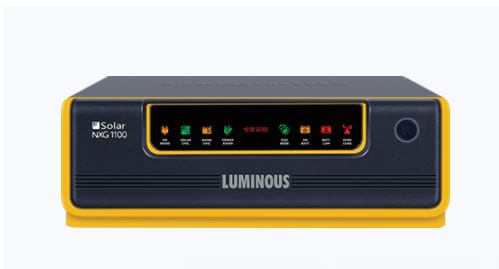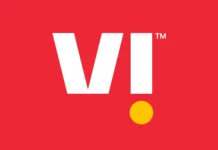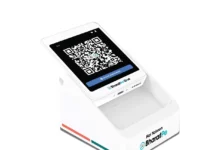In India, power outages are not a new experience. It is a common occurrence in most parts of the country. Excessive grid load and unequal electricity distribution across grids are only a few of the reasons. It disrupts the routine life of millions of people on a daily basis and the only viable solution is to switch to a backup supply. Inverters are built to meet this critical requirement.
Solar inverters can be an efficient alternative. Solar inverters’ main function is to store solar energy in batteries and use it during power outages. They are rapidly becoming more popular as people realise how cost-effective they are.
Let’s understand how a solar inverter works in detail!
What is a Solar Inverter?
The solar inverters are the most important components of a solar power system for a home. Solar inverters convert DC to AC Because solar panels generate direct current, inverters are frequently required in off-grid systems. Not only do these inverters convert to AC, but they also adjust to the load’s voltage requirements.
Solar inverters are required in grid-connected solar systems since power grids are always AC.
If you don’t do this, your solar power system won’t be able to light your entire house and power the majority of your devices.
Types of Solar Inverters
Different types of inverters are available on the market:
- Sine Wave Inverter: This sort of inverter produces the sine wave that an appliance is designed to produce. The majority of appliances can run safely on this type of electricity.
- Digital Inverter: This type of inverter is also called as Square Wave Inverter. It produces square wave AC output, which is insufficient to power all types of home appliances, which are designed to work on a sine wave AC pattern alone. A humming sound will also be heard from some of the gadgets.
- Stepped Sine Wave Inverter: This inverter is a hybrid of the two types above. The Quasi Sine Wave pattern is likewise hard to come by in the market. This kind of inverter appears to be a low-cost power option for computers and other electrical devices.
Points To Consider When Buying an Inverter
Since there are so many different types of solar inverters on the market, finding the perfect one can be difficult. So, before you go out and get one, you need first find out what you need. Here are some points that you need to keep in mind when buying a solar inverter:
- Understand How It Works
Before you go out and buy a solar inverter, you should familiarise yourself with all of the relevant terms so that you know what to look for in your inverter.
- Choosing the right battery
The battery is the most important factor in determining how long your solar inverter will last. As a result, it’s critical to pick the right battery for your solar inverter.
- Knowing the power rating and surge protection
A solar inverter is usually available in a variety of power ratings. A solar inverter’s surge rating is defined as the number of watts of overload it can handle in a short period of time. Surge ratings differ from inverter to inverter, even across inverters of the same brand.
- Considerations on peak and average power
An inverter is needed to provide two types of power: peak and normal power.
Peak power refers to the greatest power that a solar inverter can deliver for a short period of time, usually between a few seconds and 15 minutes. Certain appliances require far more power to start up than they do to operate normally once turned on; this is where peak power comes into play.
The typical power, also known as the usual power, is the amount of power supplied by the inverter on a consistent basis after the device starts up and stabilises.
As a customer, you should always find out as much information as you can before purchasing any goods, including solar inverters, to ensure that you receive the best value for your money. As a general rule, it is best to go with reputable brands such as Luminous who can offer the required assistance during the purchase process and afterwards.







